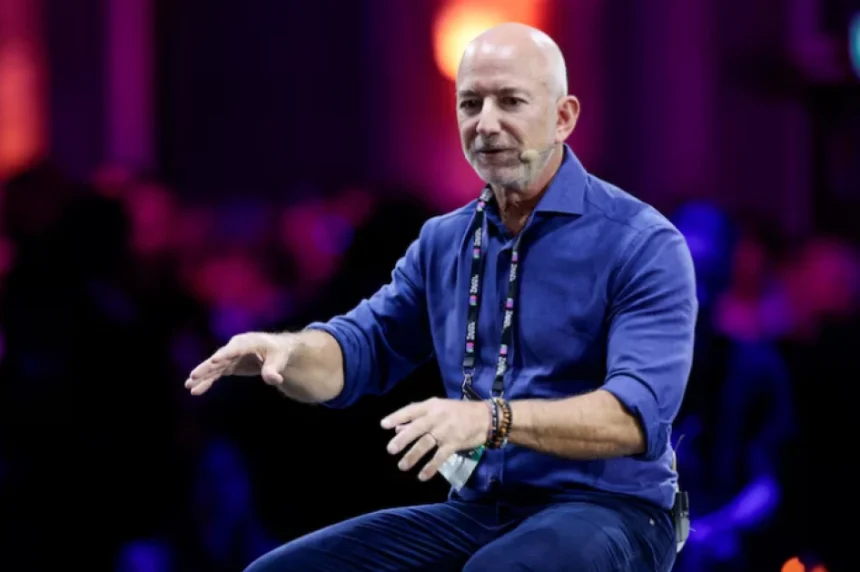As Earth grapples with the environmental costs of our digital age, Jeff Bezos is proposing a solution that’s literally out of this world. The Amazon founder and Blue Origin visionary is championing what might be the most ambitious infrastructure project in human history: moving data centers to space. This isn’t just about finding new real estate; it’s about reimagining the fundamental architecture of global computing.
Why Space? The Compelling Case for Orbital Infrastructure
The numbers behind Earth-based data centers are becoming increasingly unsustainable. Current global data centers consume approximately 1% of worldwide electricity, with AI’s exponential growth threatening to triple this consumption. The cooling requirements alone account for nearly 40% of their total energy use. Bezos’s vision attacks these problems at their core by leveraging space’s natural advantages:
-
Infinite Solar Power: Orbital facilities could harness continuous, unobstructed solar energy 24/7, eliminating reliance on terrestrial power grids and making them truly carbon-neutral.
-
Natural Cryogenic Cooling: Space’s vacuum provides perfect conditions for radiative cooling, potentially making today’s complex liquid cooling systems obsolete.
-
Global Latency Optimization: Strategically placed orbital data centers could provide faster connectivity to remote areas than ground-based infrastructure.
The Technology Stack for Space-Based Computing
Making this vision reality requires solving several complex engineering challenges:
-
Space-Hardened Hardware: Developing computing equipment that can withstand radiation, extreme temperature variations, and operate reliably in microgravity.
-
Autonomous Operations: Creating fully automated systems for maintenance and repairs, likely using advanced robotics and AI-driven diagnostics.
-
Quantum-Resistant Security: Implementing next-generation encryption that can protect data transmitted across thousands of miles of space.
-
Orbital Power Systems: Designing massive, efficient solar arrays that can generate multiple megawatts of power continuously.
The Business Case: More Than Science Fiction
While the initial investment would be astronomical, the long-term economics are compelling:
-
Energy Cost Savings: Elimination of electricity bills could justify the launch costs within 5-7 years of operation.
-
Premium Services: The ability to offer ultra-secure, low-latency global connectivity could command premium pricing.
-
Future-Proofing: Position AWS as the infrastructure backbone for the emerging space economy.
Potential Implementation Timeline:
-
2025-2030: Technology development and small-scale prototypes
-
2030-2035: First operational modules in low Earth orbit
-
2035-2040: Expansion to larger constellations and higher orbits
-
2040+: Fully integrated orbital cloud infrastructure
The Ripple Effects Across Industries
This move could catalyze transformation across multiple sectors:
-
AI and Machine Learning: Enable training of models orders of magnitude larger than currently possible
-
Scientific Research: Provide unprecedented computing power for space-based experiments
-
Financial Services: Offer ultra-low latency trading infrastructure with global coverage
-
Telecommunications: Revolutionize 6G and beyond with space-based processing
Challenges and Considerations
Despite the exciting potential, significant hurdles remain:
-
Space Debris Management: Ensuring new infrastructure doesn’t contribute to the growing space junk problem
-
International Regulations: Navigating complex space law and spectrum allocation issues
-
Environmental Impact: Assessing the full lifecycle environmental cost of rocket launches
-
Cybersecurity: Protecting orbital assets from increasingly sophisticated space-based threats
The Big Picture: A Paradigm Shift in Computing
Bezos’s vision represents more than just technological innovation—it’s a fundamental rethinking of how we approach digital infrastructure. As Blue Origin continues to drive down launch costs and AWS expands its space capabilities, the pieces are falling into place for what could become the next chapter in cloud computing.
The race to build sustainable digital infrastructure is accelerating, and by looking upward, Bezos isn’t just solving today’s problems—he’s positioning Amazon at the center of tomorrow’s space-based economy. The question is no longer if we’ll have computing infrastructure in space, but when, and who will dominate this new frontier.
What are your thoughts on space-based data centers? Is this the future of sustainable computing, or a distraction from solving Earth-based infrastructure challenges? Share your perspective in the comments below.










